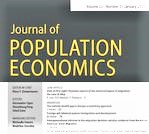A new paper published online in the Journal of Population Economics finds that Northern Italy around 1650–1799 was a more “Malthusian” society than England at that time.
The Global Labor Organization (GLO) is an independent, non-partisan and non-governmental organization that functions as an international network and virtual platform to stimulate global research, debate and collaboration.

Malthus in preindustrial Northern Italy?
by Maja Pedersen, Claudia Riani & Paul Sharp
Published ONLINE 2020: Journal of Population Economics, scheduled for 2021. Free Readlink: https://rdcu.be/cdgq1
Author Abstract: The Malthusian model, which implies a long-run interaction between demography and living standards, forms a cornerstone of our understanding of comparative economic development, as postulated by unified growth theory. Its empirical validity has been supported by a number of studies, most of which examine England. In Northern Italy, however, there might have been a reversed “preventive check.” We employ a cointegrated VAR model on Italian data from ca. 1650–1799 and find some evidence for this, but also for diminishing returns and thus a more “Malthusian” society than in, for example, England at that time.
Access to the recently published Volume 34, Issue 1, January 2021.
LEAD ARTICLE OF ISSUE 1, 2021:
Štěpán Jurajda & Dejan Kovač: Names and behavior in a war — READLINK: https://rdcu.be/b9xkX
Ends;

